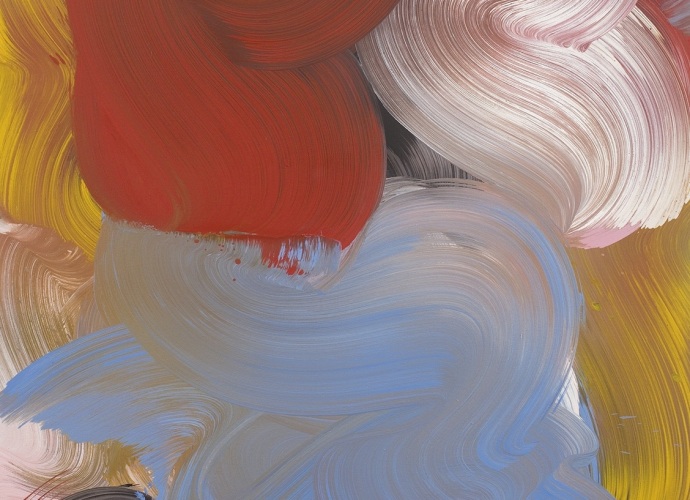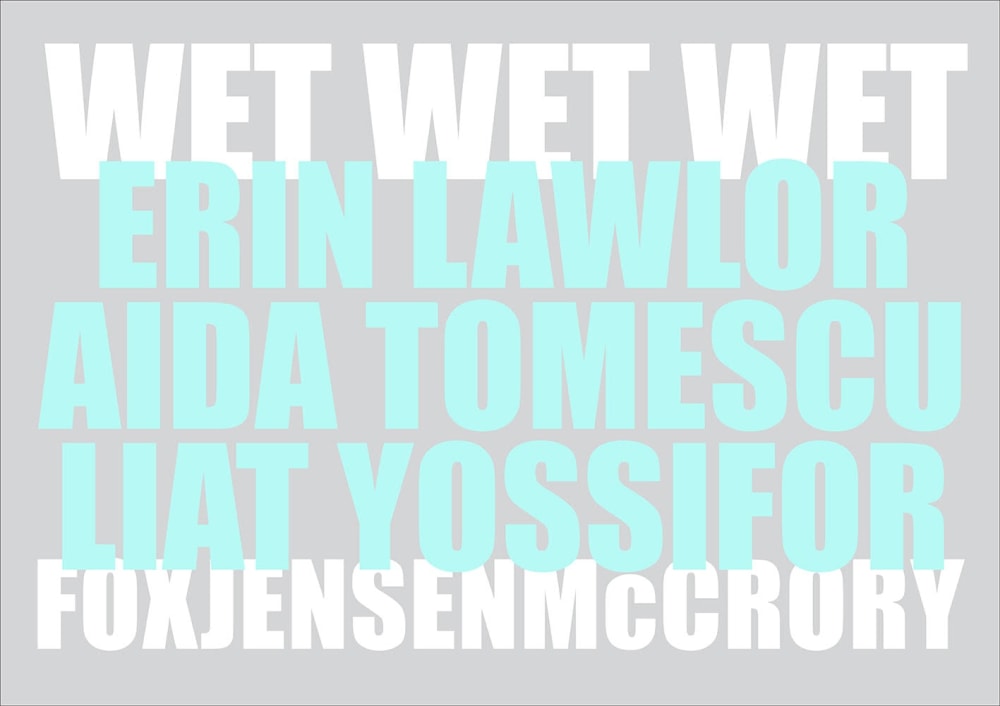
Erin Lawlor & Liat Yossifor | Fox Jensen McCrory
WET WET WET
14 February – 23rd March

“people will never understand what we are doing if they can’t feel. All art is abstract. All music is abstract. But it’s all real…We are all trying to bring spirit, that spontaneous energy, into our work” – Joan Mitchell
The overdue recalibration of Abstract Expressionism’s (his)tory to attend to the legacy of major painters such as Lee Krasner, Elaine de Kooning, Helen Frankenthaler and Joan Mitchell is the focus of Mary Gabriel’s timely (tardy actually) book Ninth Street Women, where she describes the social and political context that allowed for…even encouraged their marginalisation.
More recently, artists such as Jacqueline Humphries and Julie Mehretu have not only continued this redress in the most potent fashion, but have been joined by painters like Erin Lawlor (UK), Aida Tomescu (AUS) and Liat Yossifor (USA) - each of whom feel indispensable to this ongoing reconstitution of abstract painting in the hands of powerful women artists - artists through whose work we can clearly perceive a future for painting.
With distance and time there is a new freedom and clarity about the act of painting itself that the mercenary, Greenbergian notion of material and gesture, refused to engage. The performative conditions of painting and its relationship to the body that are apparent in the work of these painters, feels more related to the performances of Carolee Schneemann than to those of Jackson Pollock.
The conflation of a physical and temporal event, one bookended by preparation and reflection alludes to a deeper proposition, where gesture, material and duration are woven into a new fabric of time, and whose multiple components endlessly seek reconciliation.
Both Yossifor and Lawlor offer the viewer multiple entry points from which to navigate their “alla prima” performances. Lawlor’s looping brushwork leads us into a sublime and certain entanglement of colour and insinuated form from which we are reluctant to leave. Yossifor’s weave is somewhat grittier and heavier as her Ariadnean thread is physically etched into the viscous surface in a collage of asphalt turnpikes and tributaries seemingly without exit.
Lawlor’s use of colour and its relentless union and dialysis in the wake of each brushstroke, is fundamental to the emotional and intellectual persuasion that Lawlor’s paintings have. Colour is altogether a different proposition in Yossifor’s work. Individual colour is subordinate or rather gives way to its greater communal responsibility. Whilst traces of pure colour might be glimpsed in the shards and separations that can occur in the surface, these colours relinquish their individuality to establish a body of colour that is greater than the sum of its parts. There is defiance in this approach, a kind of negation and erasure that fascinates me in a melancholy way. However, as we sat and talked with Liat in her Los Angeles studio recently, the paintings quietly revealed traces of their chromatic constituency in the soft light. As the sunrays fell across the surface, their progress broken against the rifts and fissures in the paint, a new topography was revealed that was bleak and beautiful in equal measure…and there was a chromatic atmosphere around each work. Somehow in its apparent absence the idea of colour was present in a new way.
The resistance that painting represents as an act, was doubly so for a woman Gabriel suggests, and yet despite six decades between Lee Krasner and now, the challenge persists. “Resistance” is a word that I come up against time and again in looking at Tomescu’s work. There is evidence of toil and contest a plenty. Paint doesn’t just oblige - it holds and resists, it bends to her gesture but doesn’t cede to it. This counteraction is a fundamental aspect of Tomescu’s work and its power. In fact, there is something about the works’ intensity and visceral nature that suggests it always remains in contention…still wet.
There is a poignancy too in Tomescu’s colour. I sense she chooses pigment because it is capable of carrying the potency that her work corrals - or colour in fact chooses her because she is capable of the force that won’t squander or misuse it.
Each of these artists approach abstraction fuelled by poetry, spirit and energy. Perhaps they are contemporary symbolists resuscitating painting after the aridity of “process” painting and reinvesting it with bearing and purpose.
Fox Jensen McCrory is delighted to be able to present the paintings of three magnificent artists, Erin Lawlor, Liat Yossifor and Aida Tomescu. "Wet Wet Wet" will run from February 14th – March 23rd.